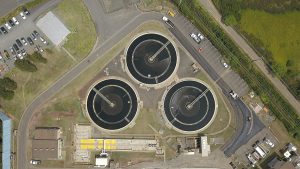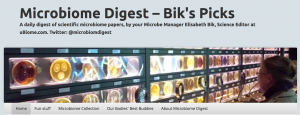This is a bit more up our alley! “The wastewater microbiome: A novel insight for COVID-19 surveillance” doesn’t look directly at the virus but at the changes in the wastewater microbiome that might proceed detection of SARS-CoV-2. The authors claim to observe such changes which could potentially be really useful. We already know that wastewater …
Getting harder to keep up with all the wastewater articles related to SARS-CoV-2. It’s becoming more and more common as a method of environmental surveillance for the virus. And yes, this article, Tracking SARS-CoV-2 RNA through the wastewater treatment process, came out a month ago… I’ve been too busy working on the pandemic to blog …
More wastewater surveillance coming out. Not sure about the title on this one since there’s been a number of publications on wastewater detection of SARS-CoV-2 in the US but maybe this title was correct when they submitted this paper “First detection of SARS-CoV-2 RNA in wastewater in North America: A study in Louisiana, USA“. Pretty …
Another article showing the value of wastewater surveillance for SARS-CoV-2. This group took weekly samples through the early days of the pandemic and on into the more recent stages and show how well that correlates with what’s known about outbreaks in the catchment area over that time. They again highlight the value of this …
While not about COVID19 directly, this paper “Initial Mapping of the New York City Wastewater Virome” has implications for the many many folks looking at SARS-CoV-2 in wastewater these days. This work is looking at all the viruses in the wastewater system and is one of relatively few metagenomic studies out there that focuses on …
Yet another wastewater surveillance study for SARS-CoV-2. Seems to be the hot topic these days. This is a great paper by Jordan Peccia and colleagues. They collected wastewater samples over the course of a couple months and saw how well those correlated with testing data and hospital admissions. Not only were the correlations extremely high, …
We’ve posted recently a few times (here, here, and here) about the idea of doing wastewater surveillance for SARS-CoV-2 (and we’ve just submitted a grant on this as well). In those cases the focus is on detecting RNA from the virus and using that to guide community health decisions such as when to end (or …
Microbes indoors DNA metabarcoding to assess indoor fungal communities: Electrostatic dust collectors and Illumina sequencing – Steffi Rocchi – Journal of Microbiological Methods ($39.95) Our study aimed to evaluate metabarcoding and bioinformatic analysis resulting from calibrated samples and samples collected by an electrostatic dust collector (EDC) in dwellings with no moisture problems. Thus, the fungal communities of …
Microbes on buildings Analysis of dark crusts on the church of Nossa Senhora do Carmo in Rio de Janeiro, Brazil, using chemical, microscope and metabarcoding microbial identification techniques – Christine Gaylarde – International Biodeterioration & Biodegradation ($35.95) The dark crust on the surface of the Nossa Senhora do Carmo church, in the centre of Rio …
Studying the 5 second rule, antibiotic resistance genes in indoor dust and sewers, Legionella in the air, and water treatment. Microbes on the floor Longer Contact Times Increase Cross-Contamination of Enterobacter aerogenes from Surfaces to Food — Robyn C. Miranda — Applied and Environmental Microbiology ($25 for 1 day) Bacterial cross-contamination from surfaces to food can …


